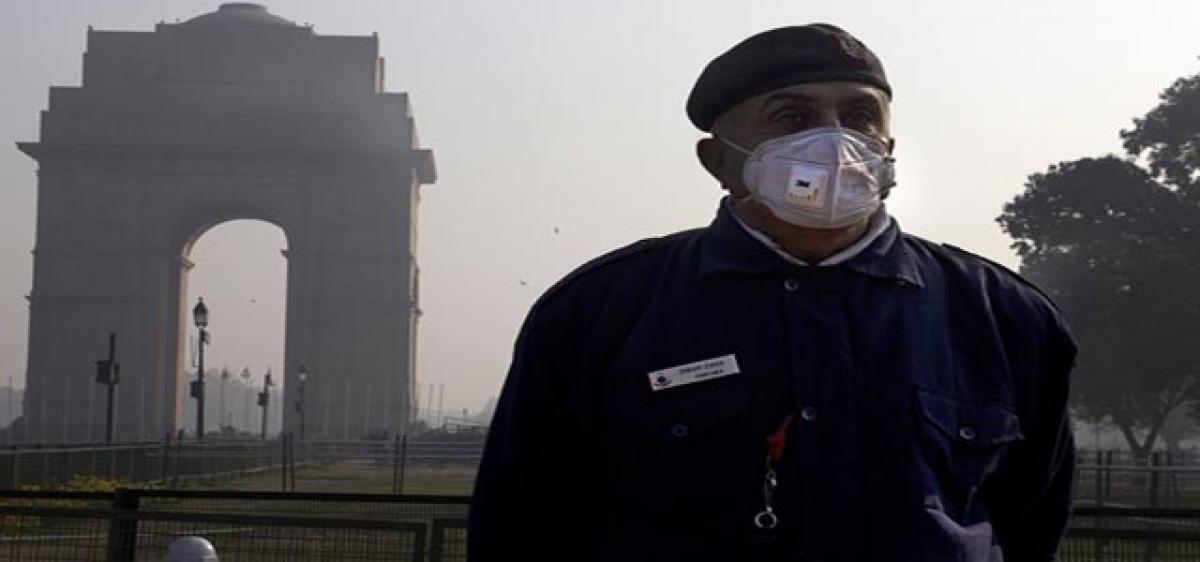Live
- First Star Outside Milky Way Captured: WOH G64 is 2,000 Times Larger Than the Sun
- Sikkim govt to constitute state Niti Ayog: CM Tamang
- CBI books Rajasthan narcotics inspector for Rs 3 lakh bribe
- Rajasthan bypolls: A tough contest between BJP and Congress
- Albania joins SEPA, paving way for EU integration
- Japanese government approves 250-billion USD economic package to ease price pain
- Six pharma companies to set up their units in Telangana
- The Unstable Events of a 17-Wicket Day in Perth: India vs Australia
- Dutch FM's Israel trip cancelled after Netanyahu's arrest warrant
- UK to increase energy price cap by 1.2 per cent
Just In

Prime Minister Narendra Modi on April 6, 2015, launched the National Air Quality Index (AQI) for monitoring the quality of air in major urban centres across the country on a real-time basis and enhancing public awareness for taking mitigative action.
Prime Minister Narendra Modi on April 6, 2015, launched the National Air Quality Index (AQI) for monitoring the quality of air in major urban centres across the country on a real-time basis and enhancing public awareness for taking mitigative action. An AQI is defined as an overall scheme that transforms weighted values of individual air pollution related parameters (SO2, CO, visibility, etc.) into a single number or set of numbers.
A modest air quality monitoring programme was started only in 1984 and public awareness about air pollution was almost non-existent. The challenge of communicating with the people in a comprehensible manner has two dimensions: (i) translate the complex scientific and medical information into simple and precise knowledge and (ii) communicate with the citizens in the historical, current and futuristic sense.
Addressing these challenges, a comprehensible AQI scale was required for citizens and policy makers to make decisions to prevent and minimise air pollution exposure and ailments induced from the exposure. There are six AQI categories, namely Good, Satisfactory, Moderately polluted, Poor, Very Poor, and Severe.
The proposed AQI will consider eight pollutants (PM10, PM2.5, NO2, SO2, CO, O3, NH3, and Pb) for which short-term (up to 24-hourly averaging period) National Ambient Air Quality Standards are prescribed. Based on the measured ambient concentrations, corresponding standards and likely health impact, a sub-index is calculated for each of these pollutants. The worst sub-index reflects overall AQI. Associated likely health impacts for different AQI categories and pollutants have been also been suggested, with primary inputs from the medical expert members of the group.
The AQI values and associated health impacts are as follows: Good (0-50) - Minimal impact; Satisfactory (51-100) - May cause minor breathing discomfort to sensitive people; Moderately polluted (101-200) - May cause breathing discomfort to people with lung disease such as asthma, and discomfort to people with heart disease, children and older adults; Poor (201-300) - May cause breathing discomfort to people on prolonged exposure, and discomfort to people with heart disease; Very poor (301-400) - May cause respiratory illness to the people on prolonged exposure. Effect may be more pronounced in people with lung and heart diseases; Severe (401-500) - May cause respiratory impact even on healthy people, and serious health impacts on people with lung/heart.

© 2024 Hyderabad Media House Limited/The Hans India. All rights reserved. Powered by hocalwire.com







